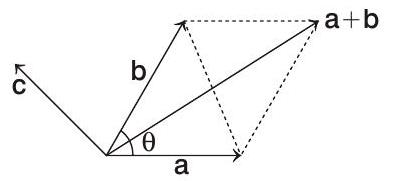Vectors 1 Question 4
4. Let
(a) 6
(b) 4
(c)
(d)
Show Answer
Answer:
Correct Answer: 4. (b)
Solution:
- According to given information, we have the following figure.

Clearly, projection of
But projection of
Now,
From Eqs. (i) and (ii),
5 Let
The direction vector of this line is
Let
The direction vector of this line is






